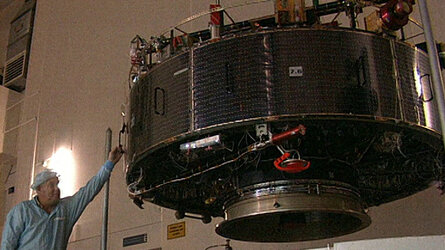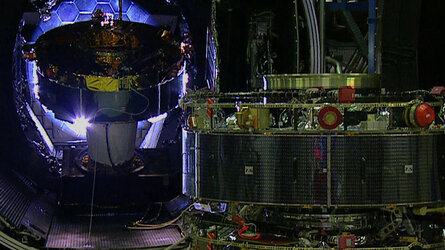
Cluster 2 Story
ESA's Cluster 2 mission, launched in 2000, will exploit a once in an 11-year opportunity of peak solar activity to study the sun's impact on the earth. The effects of this peak range from the appearance of auroras in the polar night sky, to the malfunction of satellites and disruption of power networks.The spacecraft, flying in formation between 19000 and 119000km above the Earth, will study the interaction between solar wind and the Earth's atmosphere in deep detail, to obtain three-dimensional measurements of phenomena which occur in the immediate surroundings of our planet. Cluster 2 is a replacement for the original Cluster mission, which was lost during the first test flight of Ariane 5 in June 1996. The four spacecraft will be launched in pairs by two Soyuz launch vehicles. Mission control will be performed by ESA/ESOC European Space Operations Centre in Darmstadt, Germany.







